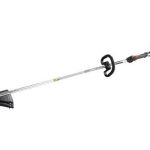For the longest time, chemical fertilizers were the standard thanks to ease of use – application and storage is simple, they don’t require much thought beyond figuring out how much to apply and where. In recent times, and thanks to advances in technology and production, organic fertilizers have become popular. if you’re looking to change to organic from chemical, there are a handful of things you’ll need to be aware of to get a good organic fertilizer.
 Organic Fertilizer is Not a Quick Fix
Organic Fertilizer is Not a Quick Fix
You need to be in the proper mindset when you go to use organic fertilizer, and that is that it will not be an immediate fix to a problem. Chemical fertilizers are designed to be absorbed quickly, and are great for turning something around quick. However, in the long-term, they create a dependency and a need for increased amount. Organic fertilizer, on the other hand, will not show immediate results. However, in the long run, the need for fertilizer will drop over time instead of increase.
The Nastier the Ingredients Sound, the More Effective the Fertilizer Will Be
Blood meal and bat guano may sound disgusting, but it’s merely the natural sources for the chemicals found in the chemical fertilizers. Just because the bag of chemical fertilizer has sanitary, scientific names doesn’t mean it’s any less gross, it just sounds cleaner.
Organic Fertilizer Stinks
Don’t use organic fertilizer indoors, especially if you are using compost, fish emulsion, or guano. These will all have an odor that will be unpleasant outside, let alone in an enclosed space. That being said, there are organic fertilizers that are fine for indoor use, or less-smelly outdoor use.
Read the Label Carefully
As with the early days of organic foods, the definition of “organic fertilizer” is still developing. Some chemical fertilizers can still be listed as organic. Make sure you aren’t being fooled by looking closely at the label – look for phrases such as “natural organic” and “low analysis,” and look for a ratio of nitrogen, phosphorus and potassium that comes to less than 15. Also take a look and see if sources are listed on the label – if it mentions something like the aforementioned bat guano, there’s a good chance they are being truthful as far as their organic statement.
Dry Organic Fertilizers
When it comes to dry fertilizers, you can buy it or you can make it on your own to fit with the lawn and garden you are fertilizing. If you’re buying pre-made, just read the label and make sure it is suited for your lawn, then broadcast it as you would a chemical fertilizer. The good news is that, unlike dry chemical fertilizer, you don;t have to worry about over-fertilizing an area – organics will not burn the grass.
Mixing your own dry fertilizer will require knowing what components have what effect. On top of the previously mentioned components, dry fertilizer will also contain bonemeal, kelp, chicken manure, greensand, and much more.
Now that you know what you will be dealing with, there’s no reason not to try and switch from chemical to organic. Your lawn and your local ecosystem will both thank you, and you’ll also be able to tell your friends how you’re getting your lawn green the natural way.






